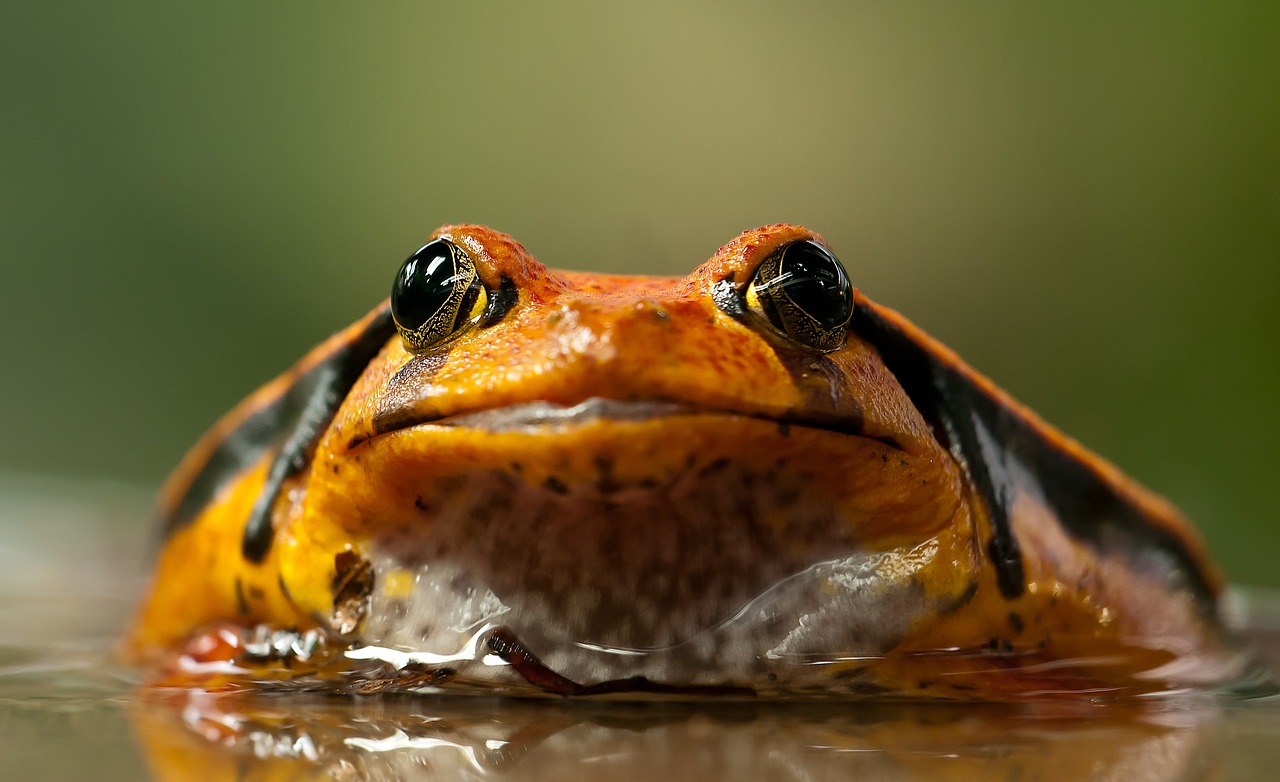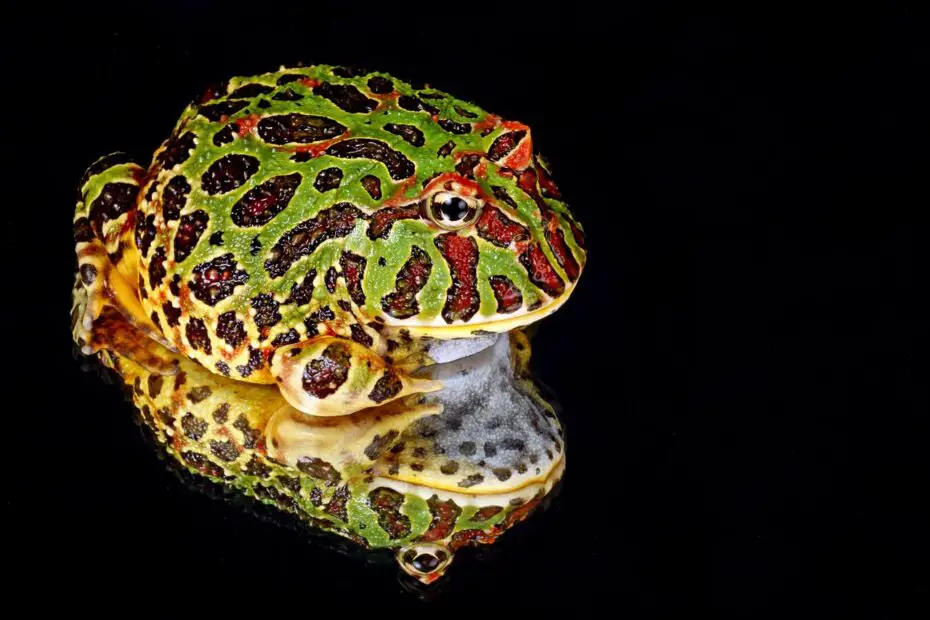Pacman frogs, also known as horned frogs, are captivating amphibians native to South America. Their distinctive appearance and carnivorous eating habits have earned them a place in the hearts of reptile and amphibian enthusiasts. One intriguing aspect of these frogs is their mouth structure, which leads us to the question: do Pacman frogs have teeth, and do they bite?
You may also want to know what frog poop looks like.
The Anatomy of Pacman Frogs
Pacman frogs are known for their relatively large and round bodies, resembling the iconic video game character after which they are named. Their mouths are wide and powerful, well-suited for their carnivorous diet. Inside their mouths, Pacman frogs possess specialized structures that help them catch and consume their prey.
Understanding Pacman Frog Diet
Pacman frogs are strict carnivores, meaning they exclusively consume other living organisms. In the wild, they feed on insects, small rodents, and even other frogs. In captivity, their diet mainly consists of insects such as crickets, roaches, and mealworms.
Do Pacman Frogs Have Teeth?
Contrary to traditional teeth, Pacman frogs do not possess actual teeth. Instead, they have bony structures in their mouths called odontoid pterygoid bones. These bones act as formidable tools for grasping and holding onto prey.

The Function of Pacman Frog Teeth
Pacman frogs use their odontoid pterygoid bones to hold and secure their prey. When a Pacman frog strikes at its prey, it uses its powerful jaws to close the mouth rapidly, trapping the prey between the bone projections. This mechanism is highly effective for immobilizing and consuming insects.
Do Pacman Frogs Bite Humans?
While Pacman frogs are not aggressive towards humans, they may bite if they feel threatened or stressed. Bites from Pacman frogs can be painful due to their strong jaws, but they are not toxic or dangerous to humans. It is essential to handle Pacman frogs with care and avoid unnecessarily stressing them to prevent bites.
Pacman Frog Care and Handling
Proper care and handling are crucial for the well-being of Pacman frogs. These frogs have delicate skin, and their bodies can absorb toxins, chemicals, and oils present on human skin. When handling Pacman frogs, it is essential to wash your hands thoroughly before and after interaction to ensure their health and safety.
Pacman Frog Myths and Misconceptions
As with many animals, there are myths and misconceptions surrounding Pacman frogs. Some believe that these frogs are aggressive, but in reality, they are generally docile and prefer a sedentary lifestyle. Clarifying these misconceptions helps promote a better understanding of these unique creatures.
Fascinating Facts About Pacman Frogs
Pacman frogs boast several fascinating traits and adaptations. They have impressive camouflage abilities, allowing them to blend seamlessly with their surroundings. Additionally, some species of Pacman frogs exhibit unique color patterns that add to their allure.
The Delicate Balance of Nature
In their natural habitats, Pacman frogs play a vital role in local ecosystems. As predators, they help control insect populations, contributing to the balance of nature. However, habitat destruction and pollution threaten these amphibians, highlighting the importance of conservation efforts to protect their populations.
Conclusion
Do Pacman Frogs Have Teeth And Do They Bite? Pacman frogs, with their captivating appearance and specialized mouth structures, are remarkable creatures. Their odontoid pterygoid bones serve as efficient tools for securing prey, showcasing their adaptations to a carnivorous lifestyle. While they may bite if provoked, they are generally docile and play a significant role in the ecosystems they inhabit.
FAQs About Pacman Frogs
- Are Pacman frogs good pets? Pacman frogs can make fascinating and rewarding pets for experienced reptile and amphibian enthusiasts. However, they require proper care and a suitable environment to thrive.
- What is the lifespan of a Pacman frog? In captivity, Pacman frogs can live around 6 to 10 years with proper care. Their lifespan can vary depending on their species and living conditions.
- Do Pacman frogs need water to swim in? While Pacman frogs are not aquatic and do not swim like some other frog species, they do need access to a shallow water dish for drinking and soaking.
- How often should I feed my Pacman frog? The frequency of feeding depends on the age and size of the frog. Adult Pacman frogs are usually fed every 5-7 days, while juveniles may need to eat more frequently.
- Can I house multiple Pacman frogs together? It is not recommended to house multiple Pacman frogs together as they are solitary animals and may become aggressive towards one another. It’s best to provide individual enclosures for each frog.
